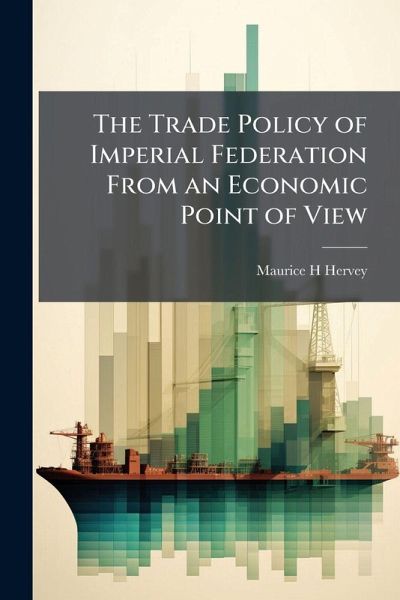
The Trade Policy of Imperial Federation From an Economic Point of View
Versandkostenfrei!
Versandfertig in über 4 Wochen
18,99 €
inkl. MwSt.
Weitere Ausgaben:

PAYBACK Punkte
9 °P sammeln!
"The Trade Policy of Imperial Federation From an Economic Point of View" examines the economic implications of establishing a unified trade policy within the British Empire. Written in 1892 by Maurice H. Hervey, this work delves into the arguments for and against imperial federation, focusing specifically on the potential benefits and drawbacks of creating a common market across the vast territories controlled by Great Britain. The book analyzes the impact of such a policy on various sectors of the British economy, including agriculture, manufacturing, and shipping. Hervey explores the complex...
"The Trade Policy of Imperial Federation From an Economic Point of View" examines the economic implications of establishing a unified trade policy within the British Empire. Written in 1892 by Maurice H. Hervey, this work delves into the arguments for and against imperial federation, focusing specifically on the potential benefits and drawbacks of creating a common market across the vast territories controlled by Great Britain. The book analyzes the impact of such a policy on various sectors of the British economy, including agriculture, manufacturing, and shipping. Hervey explores the complex interplay between free trade, protectionism, and imperial preference, offering insights into the economic considerations that shaped the debate over imperial federation during the late 19th century. This historical analysis provides valuable context for understanding the evolution of global trade relations and the enduring challenges of balancing national interests with international cooperation. This book is essential reading for students and scholars of economic history, imperial history, and international relations. This work has been selected by scholars as being culturally important, and is part of the knowledge base of civilization as we know it. This work was reproduced from the original artifact, and remains as true to the original work as possible. Therefore, you will see the original copyright references, library stamps (as most of these works have been housed in our most important libraries around the world), and other notations in the work. This work is in the public domain in the United States of America, and possibly other nations. Within the United States, you may freely copy and distribute this work, as no entity (individual or corporate) has a copyright on the body of the work. As a reproduction of a historical artifact, this work may contain missing or blurred pages, poor pictures, errant marks, etc. Scholars believe, and we concur, that this work is important enough to be preserved, reproduced, and made generally available to the public. We appreciate your support of the preservation process, and thank you for being an important part of keeping this knowledge alive and relevant.


